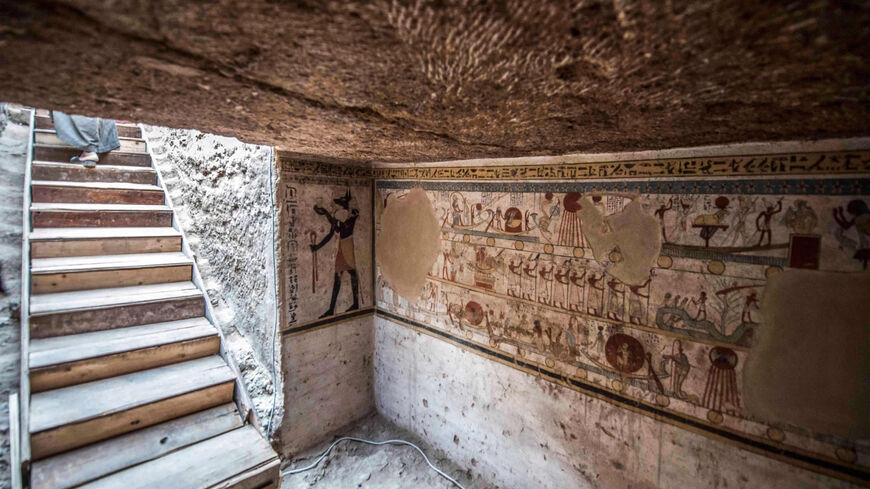Egypt: Archaeologists unearth 2,100-year-old temple in ancient village
The Egyptian government said the recent findings could lead to the discovery of a massive temple as significant as the Luxor Temple.

Archaeologists recently unearthed a chamber that could possibly lead to a 2,100-year-old temple hidden behind cliffs near the city of Sohag in southern Egypt. Researchers believe it is comparable to the Luxor Temple, one of the most famous ancient Egyptian temple complexes.
The joint Egyptian-German archaeological team said in a statement published on Nov. 25 that archaeologists made the discovery during excavation in the ancient village of Athribis, which lies around 200 kilometers (125 miles) north of Luxor.
According to the statement, the archaeologists “unexpectedly” uncovered a gate made up of two towers leading to a chamber around 6 meters (19 feet) long and almost 3 meters (9 feet) wide. The chamber was likely used to store utensils and amphorae.
On the gate’s facades, the team found remains of reliefs showing King Ptolemy VIII — who ruled over Egypt from 170 to 164 BC during the Ptolemaic dynasty — offering sacrifices to the lion-headed goddess Repit and her son Kolanthes.
The corridor leading to the chamber was also engraved with reliefs and hieroglyphs depicting Repit and the fertility god Min.
The temple is believed to have been dedicated to Repit, but further excavations are required to confirm this, project leader and Egyptology professor at the University of Tubingen in Germany Christian Leitz told Live Science on Tuesday.
The Egyptian Ministry of Tourism and Antiquities also announced the discovery in a statement last Monday, describing it as “particularly significant.” The ministry said the finding will help uncover the remaining elements of a massive Ptolemaic temple complex known as the Great Temple of Athribis.
“Preliminary studies suggest that the newly discovered structure could rival the size of the iconic Luxor Temple,” the statement added.
The archaeological team, which includes researchers from the University of Tubingen and is led by the Supreme Council of Antiquities affiliated with the Egyptian Ministry of Tourism and Antiquities, has been conducting excavation in Athribis since 2012 to uncover the remains of the Great Temple of Athribis that was built between 144 BC and 138 CE. The temple complex was 51 meters (167 feet) wide, and the towers of the entrance were each 18 meters (59 feet) high.
Ptolemy VIII is believed to have ordered the construction of the temple.
The statement released by the archaeological team cited Leitz as saying that excavation will continue at the site to find traces of the temple. “Finely smoothed limestone blocks on a vertically cut rock facade could belong to a rock sanctuary,” he was cited as saying.









